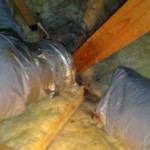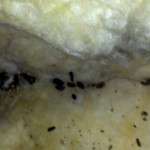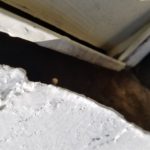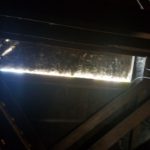Rodent Rats Mice extermination damage Insulation removal experts
Mouse exclusion, trapping and control experts have got this down to a science. so if there are sounds in the attic and the crawl space, there may be more than one problem. Noises in the attic might also be Bats, rats, mice or squirrels. The time when they are active will be a clue. Squirrels are active during the day. Bat, Mice and rats are usually active at night.
What does a rat exterminator do?
Mouse Extermination should be able to fix all of the structural issues that made it possible for the rats to get into your home. Mice and rats love warm places with a steady food supply and protection from the elements; hence, their decision to make a home in your house. Rodents like these carry potential diseases.
The house mouse usually makes a nest in stored materials indoors, but can also live outside, burrowing in areas around fields and lawns. Mice often become a problem in the fall when they enter homes to seek warmth. Mice tend to nest only 10 to 20 feet from their food supply. Hiring Professional pest control is a better bet if you are not familiar with rodent extermination.
Why do rats nest in the attic?
Roof rats are a species of rodent house rat or mouse that usually nest above ground in trees or tall shrubs, so their indoor nests are just as likely to be in upper levels of the home or business building. Rats leave a ton of droppings in an attic which are 1/3-inch brown or black thick grains of rice or even bigger depending on the food supply they have access to, very similar to squirrel droppings.
They also leave tunnels and trailways in the insulation. They also leave chew marks, they leave brown smudges from grease in their fur, and these lines the commonly travelled rat routes. You might see chew marks, on pipe insulation, wood, or electrical wires.
How to Trap a Rat – Rodent Trapping Tips on How to Catch Rats
Professional Rat Removal Companies exterminators always place traps where the rats are. Signs of nesting, gnawing, and droppings is a good area to Place the traps right up against the wall in secluded areas where they are seeking shelter and along the runways and trails the rats are traveling.
How come catching and killing rats and mice is difficult
The very first thing that has to be done is to make sure More rats and mice are not coming and don’t have an abundant food supply. Rats can be wary of new things and have a very strong sense of smell. If one sets off a trap but is not caught, It might take a while to start catching and killing them.
If this happens bait and switch will be your next option it can be advantageous to place unset, baited traps first. Then once the rats are used to them, rebate and set the triggers on the traps.
What is the best bait for rat traps?
The best bait for your trap may depend on the species of your rats. In North America, two species are most prevalent: the Norway rat and the roof rat. The Norway rat is usually found at or below ground level in burrows, basements, sewers and dumpsters.
The roof rat is usually found higher up – in trees, cliffs, attics and higher levels of a home or warehouse. Cheese is not the best bait to use on traps. Dried fruits, unshelled nuts, or even pet food can be attractive to rats.
How do mice get in homes or business buildings
Mice are primarily nocturnal, Rats and mice can fit through very tiny areas. They will also gnaw smaller holes in order to make them large enough to squeeze through. If your house has food and has any small openings, eventually mice will find their way in. House mice eat many types of food but prefer seeds and grain.
How To Get Rid of Rats
Effective prevention and control of house mouse damage involves three aspects: rodent proof construction, sanitation, and population reduction by means of traps, toxicants, or fumigants.
How Much Does Rat Removal Cost?
A Rodent exterminator will seal shut all the rat entry points, solving a rat problem forever. The total cost will probably run between $300 – $700 to remove all the rats and seal the entry holes shut, and it may seem more up-front but you won’t have to worry about rats any more.
This cost will vary a great deal, the square footage, number of repairs needed, what part of the country you live in, how many rats are in the attic, how many service trips are necessary, if you need cleanup, etc.
How to get rid of rats?
Exclusion is an important rodent control technique. It will get rid of the rats by making it difficult for them to enter the home or structure. Rats are easier to exclude than mice because rats a typically larger.
Focus on areas that may provide water, food or harborage: vegetation, refuse or wood piles, bird feeders, waterways, garages, carports, attics, crawl spaces, cupboards, closets and food storage areas. Entry points are important to consider when inspecting windows, door thresholds, utility lines, rooftops and downspouts.
Keep in mind that whether in the attic or the crawlspace, mice and rats can be destructive by their gnawing of electric and telephone wiring. They also carry ectoparasites, such as fleas, and are known to spread disease,a number one cause of allergies in a home or building not to mention the long term effects.The picture above shows Mice and rats droppings and yellow stains on the insulation a sign of activity from urinating and defecating frequently, adding to the hazards
After all the damaged insulation, food sources, nests, rats mice dropping are removed, clean up and sanitized. Eastside pest control exterminators take some time to inspect the exterior of your house looking for any potential entry point. It may be a small opening that seems harmless or something larger. Particularly, pay attention to cracks, openings around wiring or pipes, and garage and other doors providing access to interior areas. Finding potentially enter mice entry points to block . A mouse only needs an opening the size of a dime to enter your home. When inspecting upstairs, be sure to check the roof. Trim any tree limbs that are hanging over the house.
When rodents, live animals, water, or even time are introduced to your crawl or attic space, the outcome often results in damage. When this happens, you may need elimination of the rodent or animal infestation; a removal of insulation, vapor barrier, other materials and carcasses, odor control, sanitizing, exclusion, ventilation, and an install of new insulation & vapor barrier, or other materials.
Rodent damaged Crawl space insulation is removed by cutting the twine, removing slats or wood laths, or removing the tension wires which were holding the insulation in place, pulling down any remaining insulation, bagging it, and then removing it from underneath your home. All materials removed by Eastside pest control Insulation are properly disposed of at a local transfer station.






